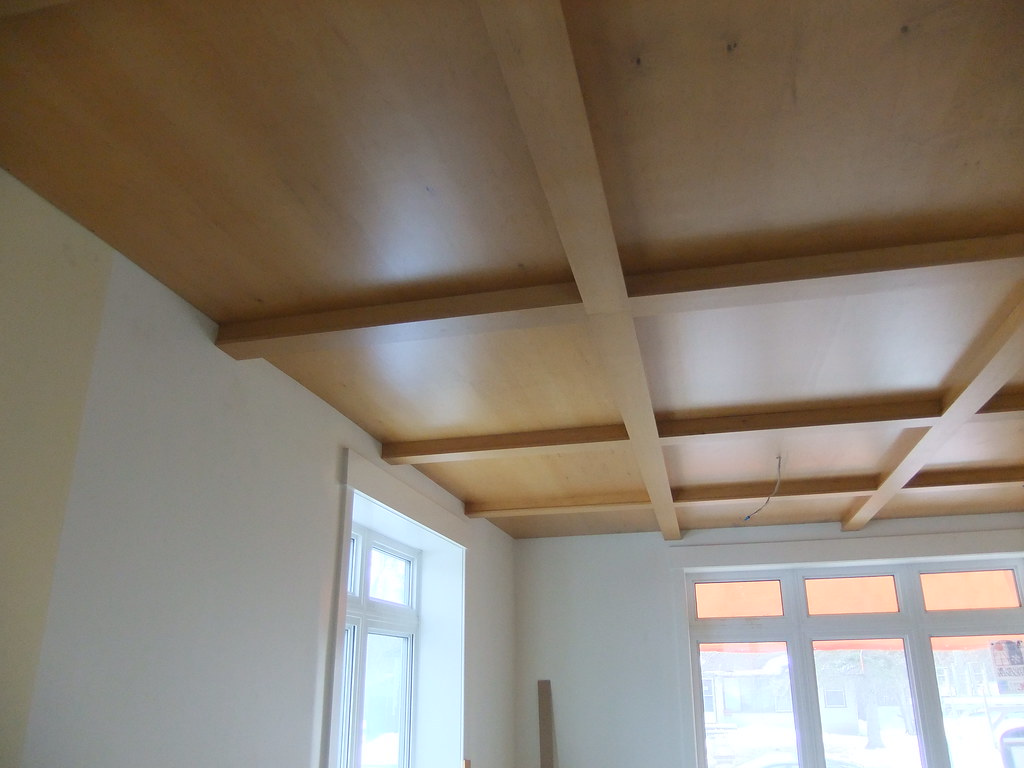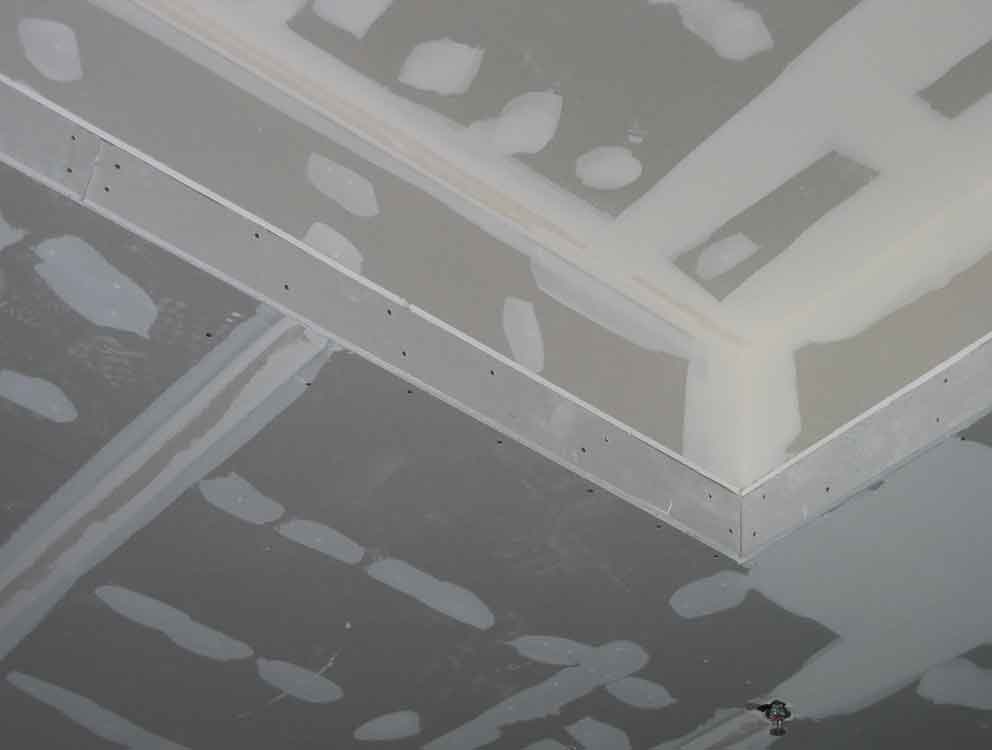What Are The Different Types Of Ceiling Materials For Home? | Roy Home Design
The ceiling is a component of the house that serves as a separator between the roof area and the occupant area so that it will create protection, comfort, and beauty in the room.
Ceiling height level is crucial in creating comfort and beauty in a room. This ceiling height is measured starting from the floor surface up to the lowest ceiling field. For houses, medium size should be used, which is between 3 – 3.5 m. With height, it can create good air circulation, and the room will look better. The lowest level limit for ceiling installation is 2.5 m from the floor. If the ceiling installation is too low, then the room will feel stuffy and tightness and poor air circulation. Conversely, if the ceiling is installed too high, the beauty is not optimal and makes your home budget even greater.
In some high-rise buildings, the maximum ceiling height is only 2.5 m. This because the height of each floor is 3 m, and then it will be reduced by beams and AC ducting. If the height is more than 3 m, it will result in a waste of materials, and the building looks tall.
See also: Bedroom Ceiling Design – Creative Choices and Features
Ceiling Functions
In general, the ceiling functions as a room height limiter, protection, comfort, and beauty. However, the detail of the ceiling functions is
-
- room height limit
- as a protector from small-sized dust dirt,
- as a protector from rain splashes,
- insulator to manage heat and cold,
- roof truss cover to make the room look neat and clean,
- a silencer, noise from rain or other sounds,
- a place to hang lighting components.
Ceiling Materials Options
In the market today, many materials can be used as a ceiling. Examples include plywood, GRC boards, gypsum, wood, bamboo, asbestos or plasterboard, PVC, aluminum, and metal.
-
Plywood ceiling
The size of plywood available on the market for the cover is 122 cm x 244 cm with a thickness of 3 mm, 4 mm, and 6 mm. For installation, plywood can divide into four pieces with a size of 61 cm x 122 cm. Alternatively, plywood can also be installed without being cut into pieces. The ceiling frame uses rafters 4/6 or 5/7 with a 60 cm x 60 cm.
The advantages of using plywood ceilings are
- easy to process (installation),
- easily to get,
- low price,
- easily repaired or replaced,
Disadvantages of using plywood ceilings are
- not waterproof
- not fire-resistant.
-
Fiber cement / GRC board
Nowadays, many people use fiber cement or GRC board as a ceiling. That is because GRC boards are cheaper than plywood. On the market, the GRC board size for the cover is 60 cm x 120 cm and 122 cm x 244 cm with a standard thickness of 4 mm.
The ceiling frame used can be 4/6 or 5/7 rafters. There are also people using hollow as a ceiling frame. Hollow iron is an alternative that can use because the wood price is increasingly high today. The size of the hollow iron that s often used is 4 cm x 4 cm.
How to install the GRC board on the ceiling rafter is by nailed. Meanwhile, the installation of GRC boards on hollow steel frames is screwed or riveted.
The advantage of using a GRC board ceiling is
- the installation is easy,
- relatively lower price than plywood,
- easily repaired or replaced,
- relatively lightweight,
- resistant to fire and water.
Disadvantages of using the GRC board ceiling is
- still hard to get in some areas,
- not impact resistant.
-
Gypsum
Gypsum is very suitable to be installed in a house with concrete slabs as the roof because the possibility of leakage is little. The gypsum size on the market is 122 cm x 244 cm. In principle, the material requirements for gypsum ceiling installation are quite the same as the GRC board ceiling. The difference is, besides requiring screws, you will need gypsum powder or compound to make a fine finishing.
Gypsum powder serves as glue on the ceiling joints and ornament. Generally, the installation of gypsum joints must be plastered first before going to the compound process. As with the GRC board installation, you can also use a hollow steel frame. The installation on hollow metal using screws or rivets, not nails.
The advantages of using gypsum ceilings are
- fast installation
- easily available in big cities,
- easily repaired or replaced,
- smoother ceiling surface.
Disadvantages of using gypsum ceilings are
- easily damaged when contacted with water,
- not everyone understands how to install it,
- is hard to obtain in remote areas.
-
Asbestos
In the market, asbestos can found with a size of 1 m x 1 m and 0.5 x 1 m. Its thickness is 2-3 mm. The asbestos installation method and the material needed per square meter are the same as for the plywood ceiling.
The advantages of using asbestos ceilings are
- the installation is quite easy,
- easily obtained,
- easily repaired or replaced,
Disadvantages of using asbestos ceilings are
- fragile and easily broken so need to be careful in installation,
- not impact resistant, even small impact
- very bad for the respiratory system
See also: Using Air Conditioner Or Fan As Air Circulation For Home, Which Is More Suitable For You?
-
Acoustic ceiling
Acoustic ceiling materials can be a good alternative. This type of cover is light, beautiful, and resistant to certain noise thresholds. There are two sizes of acoustic ceiling, 60 cm x 60 cm and 60 cm x 120 cm.
The frame for the acoustic ceiling can be a wooden frame or an artificial metal frame. The installation of this frame is effortless because it has formed precisely, just linked it. The suspension frame uses wire that installed in concrete. As a metal frame lock, screws or rivets can be used. Installation for the hangers must use a dynabolt if you want to attach it to a concrete slab.
The advantages of using acoustic ceilings are
- fast installation
- soundproof,
- easily repaired or replaced,
Disadvantages of using acoustic ceilings are
- easily damaged when contacted with water,
- the price is high,
- challenging to get in remote areas.
-
Aluminum ceiling
Aluminum ceilings materials commonly used for meeting rooms, terraces, and lobby areas. Aluminum ceiling panels or aluminum bars that are customized will produce an exclusive impression. This ceiling is beautiful, lightweight, and fire-resistant. Also, aluminum does not rust even though not painted because it has colored.
The installation uses a hollow steel frame mounted with rivets or screws. For the aluminum panel joints are used sealant. While installing hollow frames on concrete using dynabolt.
The advantages of utilizing aluminum ceilings are
- seem luxurious,
- waterproof,
- fireproof,
Disadvantages of using aluminum ceilings are
- expensive,
- the installation is difficult,
- replacement is relatively difficult
-
Metal ceiling
Metal ceilings commonly used for gas stations and warehouses. However, the metal ceiling is more used today. Besides being lightweight, this metal ceiling is also easy to install and is relatively resistant to corrosion even if it’s not painted. Because the metal ceiling has it had colored from its manufacture.
The installation uses a hollow iron frame that mounted with rivets or screws. The installation of metal frame suspension uses dynabolt when attached to a wall.
The advantages of using a metal ceiling are
- looks neat,
- waterproof,
- fireproof,
Disadvantages of using a metal ceiling are
- expensive,
- not found in all building material stores,
- the replacement is relatively difficult
See also: How to Install Light And Air System For Home Properly
So, if you like to obtain all these wonderful shots regarding What Are The Different Types Of Ceiling Materials For Home?, click save icon to store the shots in your PC. There’re all set for down load, if you like and want to obtain it, click save logo on the page, and it will be directly saved in your PC.
Here you are at royhomedesign.com, content above What Are The Different Types Of Ceiling Materials For Home? published. Some people trying to find specifics of house ceiling materials and of course one of these is you, is not it?








